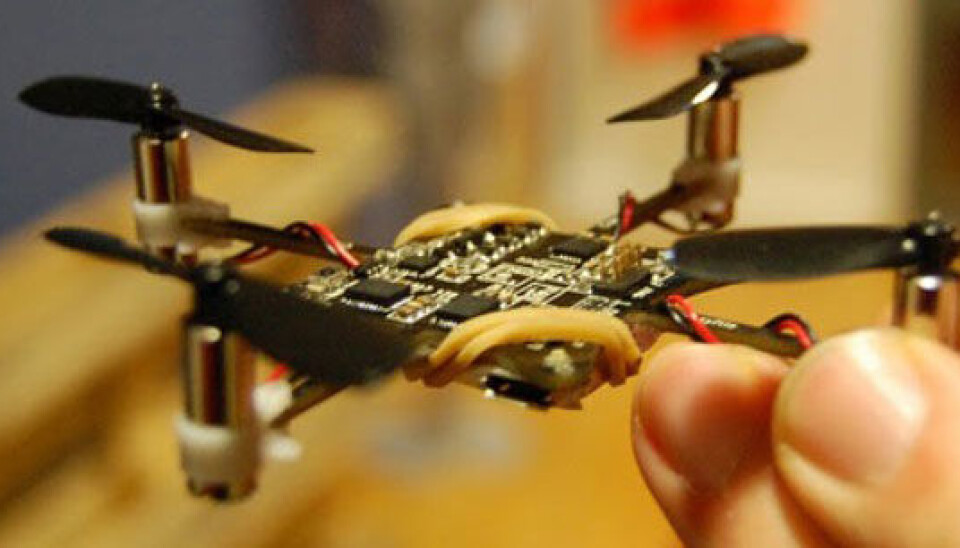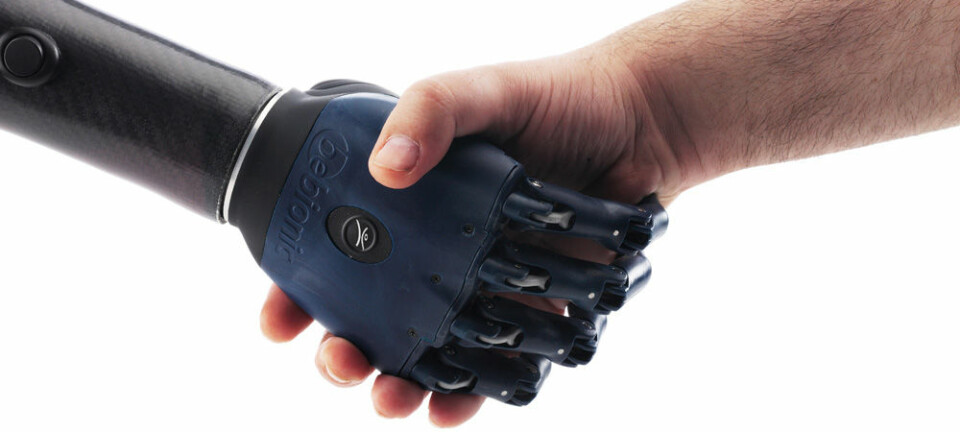
Swedish engineers launch hackable mini-drone
A trio of friends in Sweden has created a miniature helicopter kit with open source code. Users can hack into the drone's software and adapt it to their own needs.
Three years ago, three friends started with a simple idea. They would build a "flying circuit board," Marcus Eliasson said to NRK.no, the Norwegian Broadcasting Corporation's news website.
Eliason is one of the trio of Swedish engineers who developed the product.
Their ambition was to create something that could fly indoors but that would consist of as few parts as possible. They call their result Crazyflie Nano Quadcopter.
Precision flier
The teeny-tiny helicopter weighs less than a first-class letter - 19 grams - and easily fits in the palm of your hand. It can be steered by a game controller connected to a PC.
The device might not look aerodynamic, but videos from the developers show it has remarkable flying capabilities, and is speedy and precise.
It can hover, fly high and low, and steers readily around obstacles.
For hackers
Crazyflies are built with an open source code, which means that anybody can modify and customise the 'copter. The developers encourage buyers to do exactly that.
“We hope people will contribute to its development by adding new functions and coming up with new ideas, in addition to improving on what we already have built,” says Eliasson.
They have a wish list of new functions. One of these is autopilot, which the Swedes have worked on but haven’t succeeded in developing yet.
The engineers have added several sensors and an antenna that create a platform for a host of new functions that users can add themselves.
“We think there is a great potential for new ideas now that we are launching it with an open source code. Users can explore what the product is capable of,” Eliasson says.
“We have already been involved in a Master’s degree project in which students have worked on adding a camera. This was in cooperation with Epsilon and Linköping University,” he says.
Eliasson and his partners have regular day jobs, so the development of Crazyflie has actually been a hobby in their spare time. They recently started a company called Bitcraze and are taking orders for the 'copter and plan to start deliveries in April.
Battery power limits flight time
The future will increasingly involve more surveillance and use of drones, which in turn are shrinking in size. The Norwegian firm Prox Dynamics, for example, has delivered a mini-drone called Black Hornet to the British military.
The Swedish invention is more of a toy for ordinary consumers, even though it is being sold as a kit that buyers have to assemble. Martin Gilje Jaatun, a senior researcher at SINTEF in Trondheim, thinks flying units equipped with cameras will become ubiquitous.
“Small toy helicopters with video cameras are already generally available, so the development will just keep continuing,” Jaatun told NRK.no.
But will there be a greater risk of invasion of privacy as more and more consumers use these products?
“I’m not concerned when it comes to the near future, because of limits posed by current battery capacity. This is still simply short-lasting fun for the most part,” he says.
Bitcraze’s tiny four-rotor helicopter has a flight time of about seven minutes and takes 20 minutes to recharge, so it won’t be taking any long trips.
Nevertheless, as time goes on, Jaatun thinks small drones could pose a problem.
"Over the long term? Well, perhaps our privacy protection laws will come into play. Video surveillance in public areas is illegal, as is surveillance in people’s private spaces,” he says. "Whether the ‘droners’ of the future will be wholly law abiding is another issue.”
Marcus Eliasson thinks the mini-drone he and his pals have developed poses no threat to the right of privacy.
“Crazyflie is rather harmless because of its limited range and the loads it can carry. But when it comes to larger drones, there’s a legitimate debate which will be interesting to follow,” says Eliasson.
---------------------------------
Read the Norwegian version of this article at forskning.no
Translated by: Glenn Ostling







